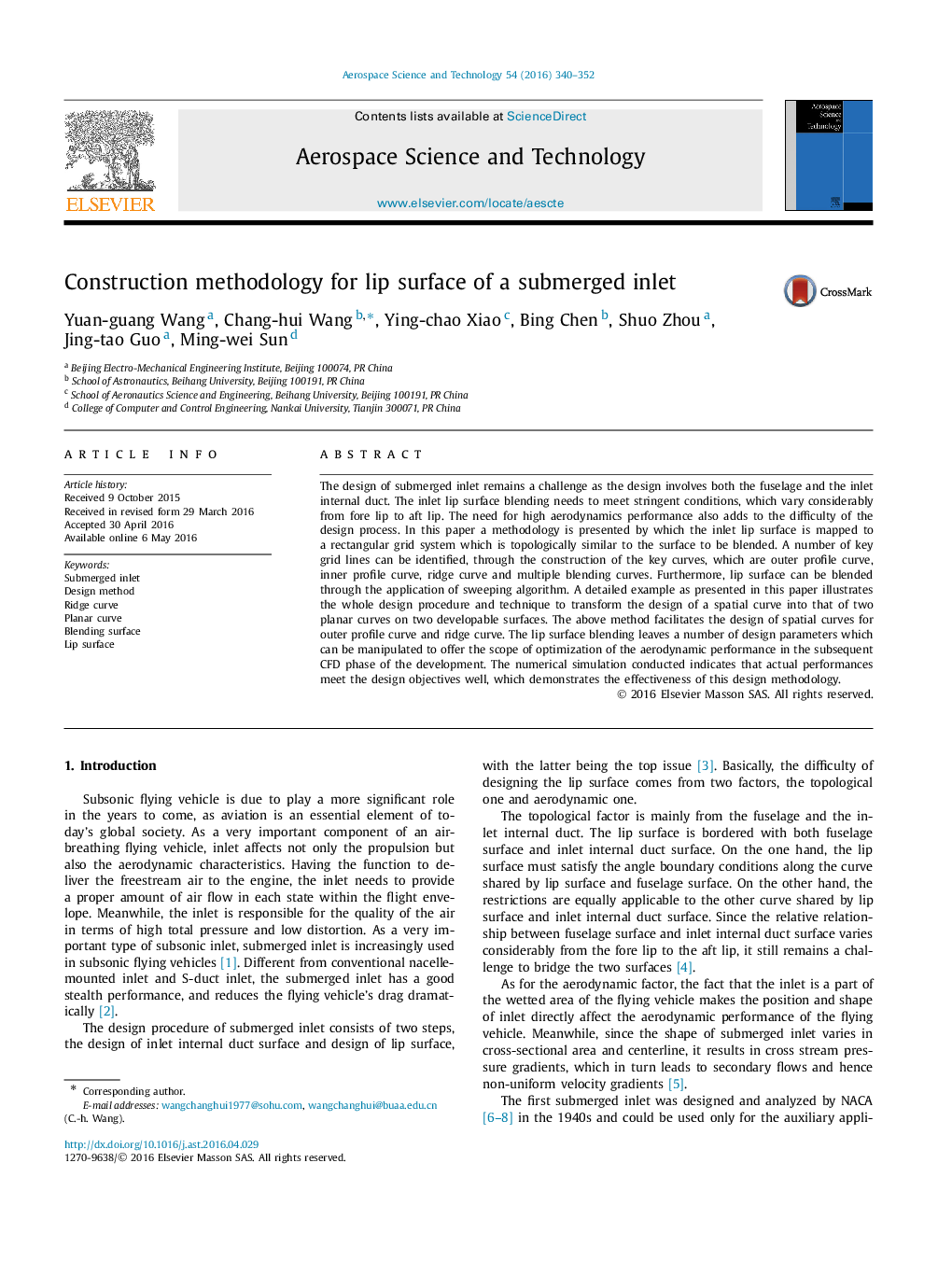| Article ID | Journal | Published Year | Pages | File Type |
|---|---|---|---|---|
| 8058611 | Aerospace Science and Technology | 2016 | 13 Pages |
Abstract
The design of submerged inlet remains a challenge as the design involves both the fuselage and the inlet internal duct. The inlet lip surface blending needs to meet stringent conditions, which vary considerably from fore lip to aft lip. The need for high aerodynamics performance also adds to the difficulty of the design process. In this paper a methodology is presented by which the inlet lip surface is mapped to a rectangular grid system which is topologically similar to the surface to be blended. A number of key grid lines can be identified, through the construction of the key curves, which are outer profile curve, inner profile curve, ridge curve and multiple blending curves. Furthermore, lip surface can be blended through the application of sweeping algorithm. A detailed example as presented in this paper illustrates the whole design procedure and technique to transform the design of a spatial curve into that of two planar curves on two developable surfaces. The above method facilitates the design of spatial curves for outer profile curve and ridge curve. The lip surface blending leaves a number of design parameters which can be manipulated to offer the scope of optimization of the aerodynamic performance in the subsequent CFD phase of the development. The numerical simulation conducted indicates that actual performances meet the design objectives well, which demonstrates the effectiveness of this design methodology.
Related Topics
Physical Sciences and Engineering
Engineering
Aerospace Engineering
Authors
Yuan-guang Wang, Chang-hui Wang, Ying-chao Xiao, Bing Chen, Shuo Zhou, Jing-tao Guo, Ming-wei Sun,
